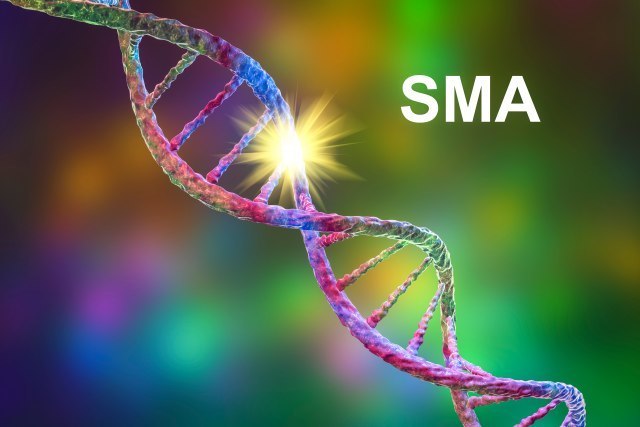Serbia will make a drug for SMA: It will be cheaper and more effective than Zolgensma
The development of the cheaper and more effective drug to alleviate the symptoms of spinal muscular atrophy in infants is the goal of the SMAIPROTACs project.
Source: novosti.rs/B. Borisavljević
The development of a significantly cheaper and more effective drug to alleviate the symptoms of spinal muscular atrophy in infants is the goal of the SMAIPROTACs project, which is financed by the Science Fund of Serbia within the Prizma program.
For these purposes, the Fund allocated 284,781 euros. New medicines will be developed using artificial intelligence. A team of scientists from the University of Kragujevac and Belgrade will, during the next three years, come up with an innovative drug that will cause the degradation of HDAC4 in proteosomes and thus slow down or completely stop muscle degradation in SMA.
In an interview with "Novosti", team leader Dr. Milan Mladenović, associate professor of the Faculty of Science and Mathematics in Kragujevac, states that, feeling empathy for families struggling with SMA, as university professors and scientists, they considered it an obligation to contribute to the fight with their research pertaining to this disease, hoping that their efforts in a few years will result in drugs to ease the symptoms of this serious disease. This is how the team was assembled, made up of biochemists, geneticists and organic chemists, experts in their fields.
"Our research concept is designed not to perform chemical modifications of human DNA and thereby stimulate the creation of SMN proteins (an approach that proved to be ineffective), but to try to inactivate proteins that surround DNA, so-called epigenetic proteins, and thereby indirectly influence the further development of the disease", Professor Mladenović states.
"Epigenetics is a scientific discipline with an extraordinary expansion and a potentially great impact on medicine. Our contribution to epigenetics will also be through the application of artificial intelligence for the design of epigenetic drugs, thereby following the latest trends in chemistry, pharmacy and medicine. Finally, the designed molecules will be chemically synthesized and pharmacologically tested, with the hope of developing extremely effective drugs in the fight against SMA."
The drugs will not affect the DNA
He points out that the existing drug ZOLGENSMA is a genetic therapy, i.e. a part of the genetic material of a harmless adenovirus, which when introduced into the human genetic material should stimulate the re-creation of the SMN protein. Numerous vaccines against other diseases that have been used in medicine for years work in a similar way. However, the preparation of such a drug and the very process of administering the therapy is very expensive and amounts to 2.125 million US dollars per therapy.
"As I already indicated, the drugs we will develop will not affect the DNA, but the proteins that surround the baby's DNA," explains Professor Mladenović for "Novosti". "After reviewing the scientific literature, we found that the symptoms of SMA could be significantly, if not completely alleviated, if the activity of an epigenetic protein called histone deacetylase 4, abbreviated HDAC4, was completely turned off. Namely, HDAC4 in the muscles stimulates other proteins to contribute to muscle death in SMA. Exactly how we would turn off HDAC4 activity is unique in the treatment of SMA and has not been tested until now." In addition to Professor Mladenović, the project manager, the team includes Dr. Nevena Tomašević, also from the Faculty of Science, University of Kragujevac, responsible for research at the level of epigenetic proteins, Dr. Sanja Matić from the Institute of Information Technologies, University of Kragujevac, an expert in the field of genotoxicology and immunobiology, which will conduct immunological and experimental animal research.
Also, Dr. Vladimir Savić and his team from the Faculty of Pharmacy of the University of Belgrade, consisting of Dr. Milena Simić, Dr. Gordana Tasić and Dr. Predrag Jovanović, experts in the field of organic synthesis who will also synthesize and design drugs, are part of the team.
Speedy recovery from SMA
Professor Mladenović and his colleagues thank the Government of the Republic of Serbia and the Association for Rare Diseases for their efforts to diagnose SMA in a timely manner and to finance the treatment of every affected child, as well as the Science Fund, which recognized and financially supported the efforts of scientists in the development of new drugs against SMA.
The SMAIPROTACs project will develop special drugs using the so-called PROTAC technology, which will be able to locate the HDAC4 protein in the cell and simply move it to its special parts, called proteosomes, where the disruption of the structure of HDAC4, and therefore its activity, will be carried out. After the targeted degradation of HDAC4, the progression of SMA would be temporarily slowed down (until the biosynthesis of a new amount of protein). Our scientists are of the opinion that PROTAC molecules would be very beneficial before, during and after therapy with the drug ZOLGENSMA and would greatly accelerate recovery from SMA.
"The goal is to use artificial intelligence in a rational way to develop just a couple of PROTAC molecules that will pass all stages of laboratory and clinical tests and be used as medicines," says the team leader.
"The bottom line is to rationally use experimental resources and develop only drugs that will have realistic prospects in the fight against SMA."
Innovative drugs will be significantly cheaper than the drug ZOLGENSMA, primarily because they are molecules whose chemical synthesis and pharmacological evaluation will be relatively cheap and available.
"The path to the official registration of our innovative drugs and approval for use in children of the youngest age will be long and will be measured in years, because it will include the four phases of clinical trials that each drug goes through," says Professor Mladenović.
"Nevertheless, the PROTAC drugs resulting from the SMAIPROTACs project, which will be approved for use in infants, will be able to be applied from the earliest age after the diagnosis of SMA, because the biosynthesis of the HDAC4 enzyme begins already in the last trimester of pregnancy. Therefore, as soon as SMA is diagnosed, we will be able to reduce the level of HDAC4 protein in the child's body."
Potential drugs will be tested at multiple levels. The most important evaluation step during the SMAIPROTACs project involves inducing SMA in rats and then testing the PROTAC molecules to see if they prevent nerve and muscle death in rats.
"Examinations on laboratory rats will provide clear guidelines as to which drugs will be sent to the further processes of preclinical and clinical trials because they are model organisms that are genetically similar to humans," says Dr. Mladenović.
"We will apply standard procedures for working with experimental animals for which we have obtained all the necessary ethical permits. Research on laboratory rats will be the crown of our project. Any further clinical research will be in agreement with interested pharmaceutical companies."











